March / April 2018
Colombo
Many Sri Lanka travelers do not visit Colombo because they believe that this is another Asian city with a lot of traffic, exhaust fumes and noise. Of course that is true, and yet I think that Colombo is well worth a visit, as the following remarks show.
In the old town of Colombo, in the Pettha quarter, one is back in Asia of the last century. People still walk through the streets with big trolleys. Everything is sold from the small shops as it used to be in the Chinese towns of the Asian cities. The narrow streets are bustling with activity. There are also some shops with the beloved Indian sweets. A few places of worship of different religions are also located in this area.
The Hindu Temple Old Kathiresan

The Jami Ul-Alfar Mosque
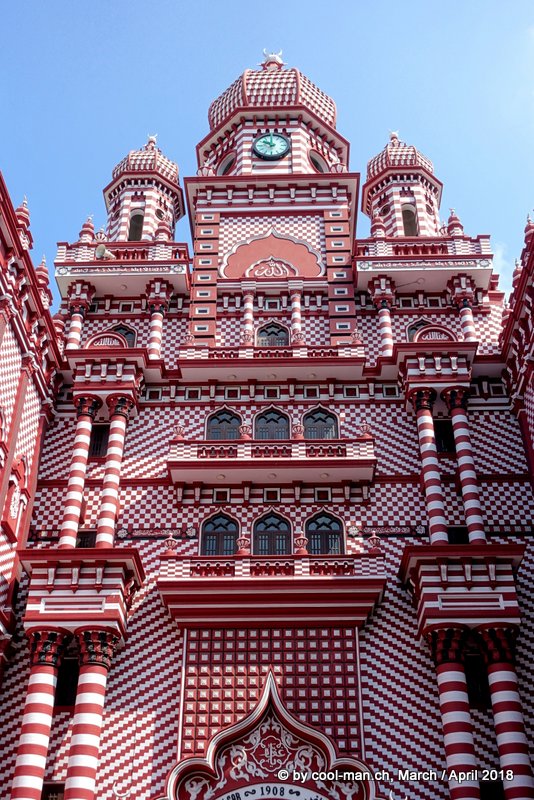
Not far from this historic quarter, the Chinese are investing 1.4 billion US dollars to fill up a huge piece of land on which the “Colombo Financial City” will one day be built. The Chinese see this investment as part of the maritime silk road between East and West. Sri Lanka hopes that this project will create well-paid jobs and a base to attract further foreign investment. At the moment sand is being pumped from the sea to the landfill area. Not a single house in the picture is already standing.
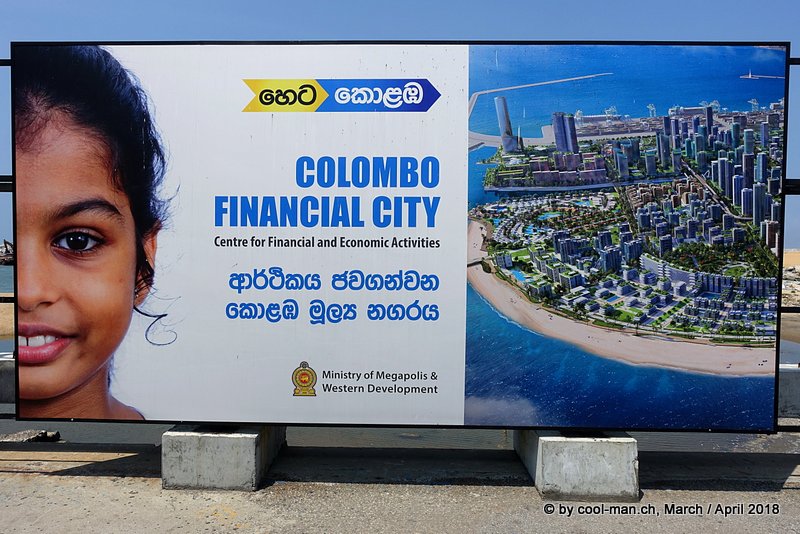
In Colombo there are many great temples, for them alone Colombo is worth a visit.
Kelani Raja Maha Viharaya Temple
Buddhists believe that the temple Kelani Raja Maha Viharaya was consecrated personally by Buddha and has existed since at least 500 BC.
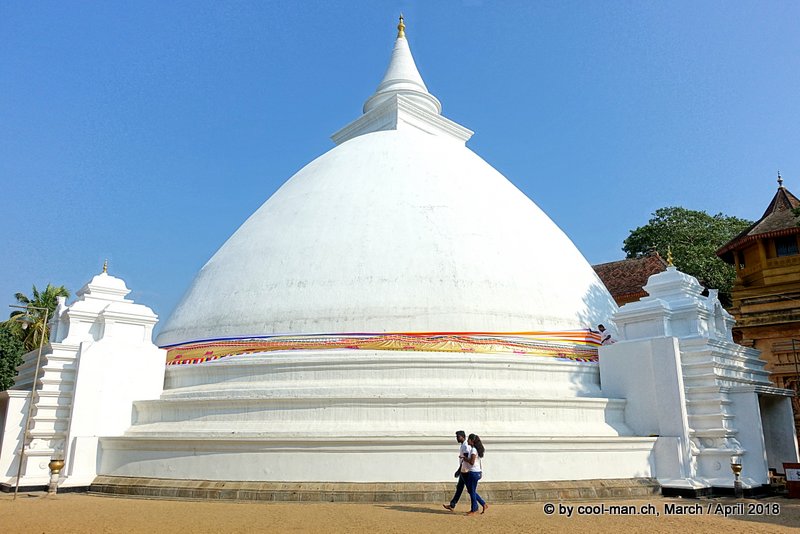
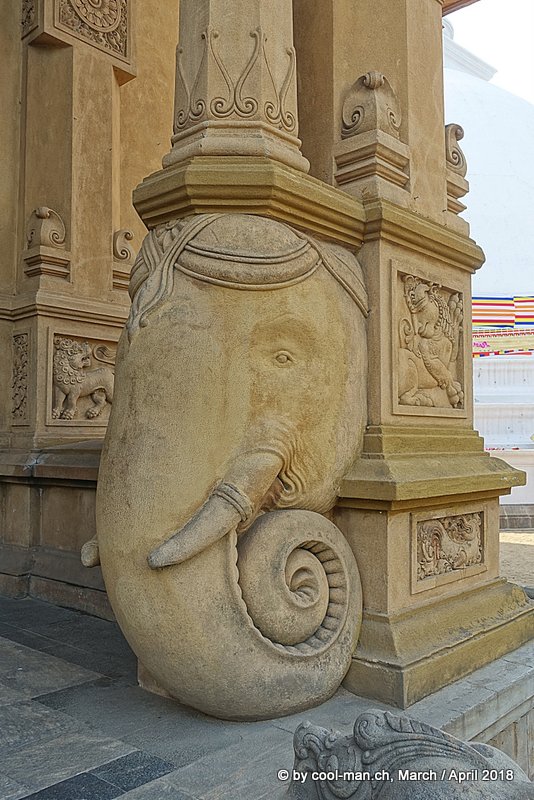


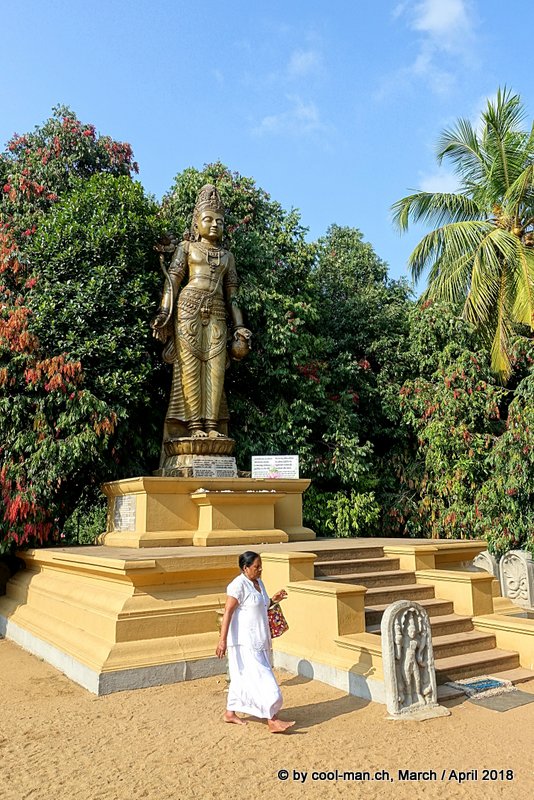
Gangaramaya Temple
The Buddhist Temple Gangaramaya

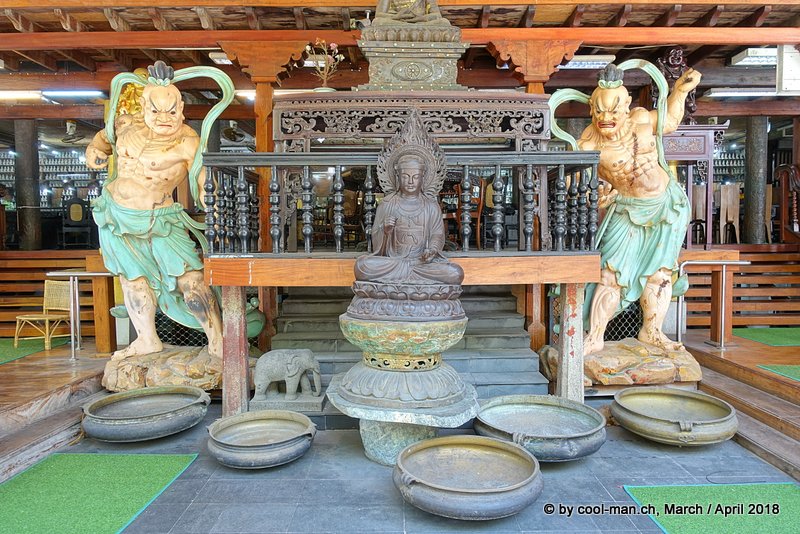

Ponnambalawaneswaram Kovil Temple
The Hindu temple Ponnambalawaneswaram Kovil is dedicated to Shiva. People happily agreed that I photographed them.
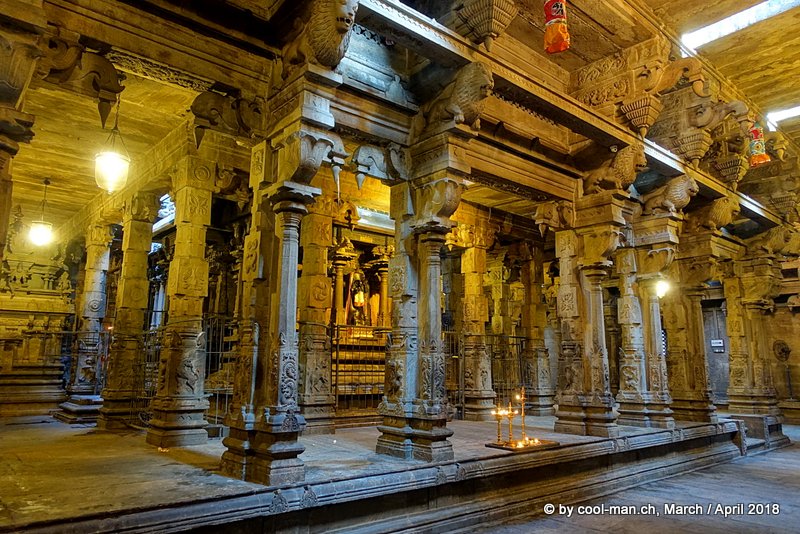
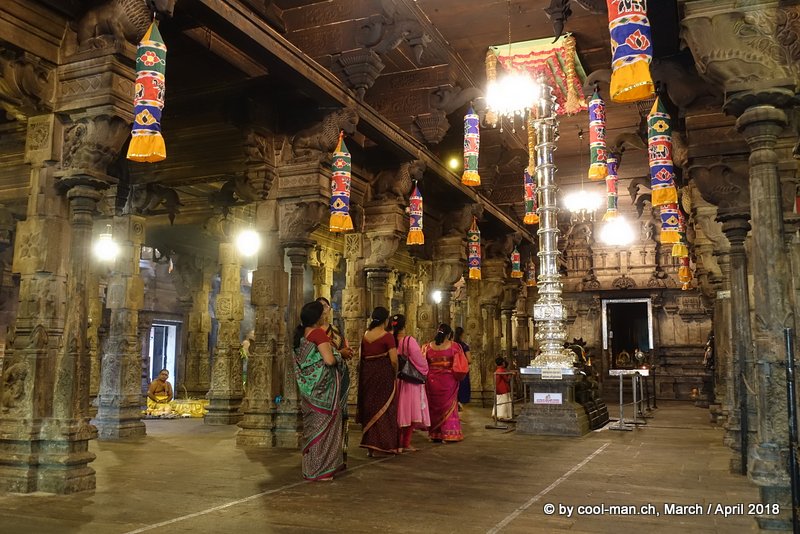

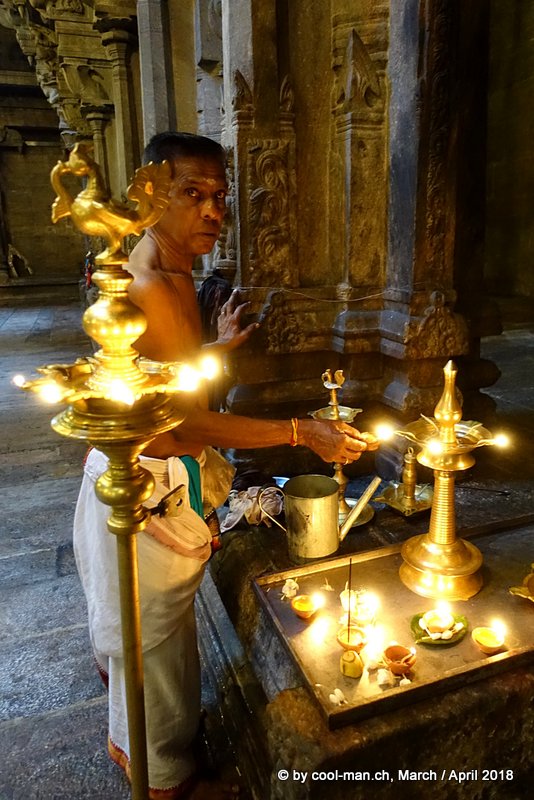

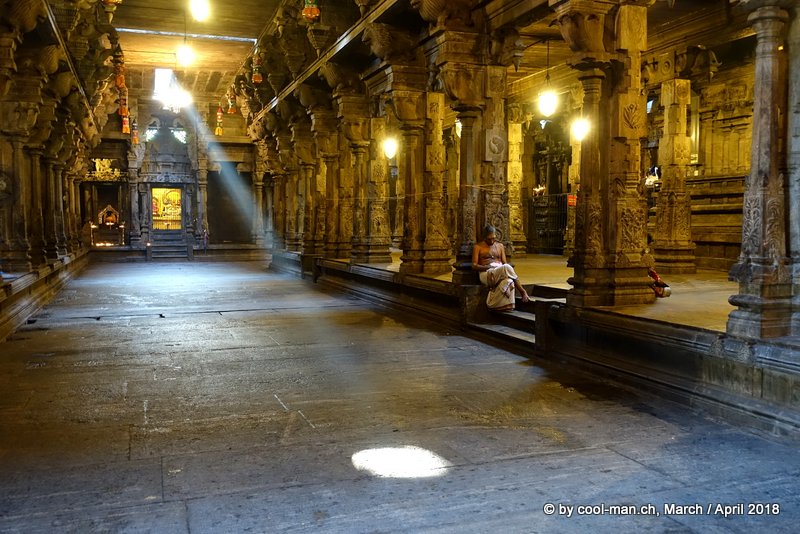

Viharamahadevi Park
This Buddha meditates in Viharamahadevi Park
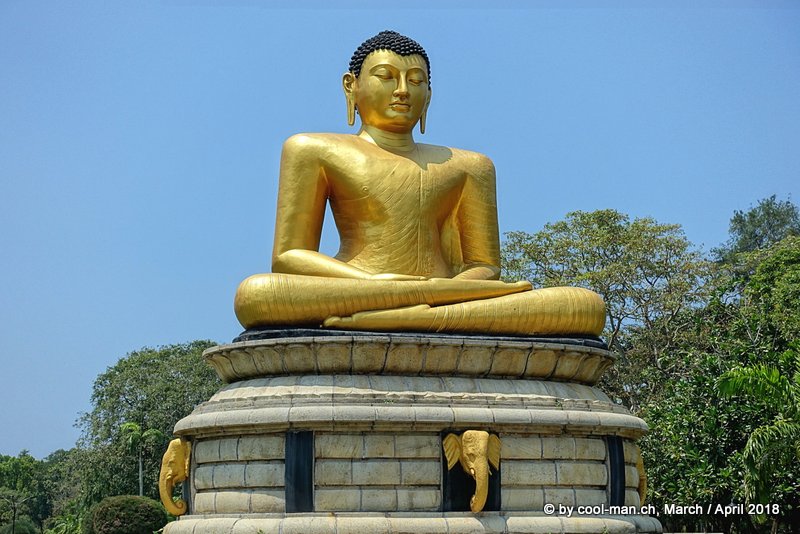
Colombo National Museum
The Colombo National Museum is housed in a wonderful colonial building and is Sri Lanka’s largest museum. The exhibition comprises countless rooms and shows art, carvings and statues from Sri Lanka’s historical past, but also swords, weapons and other utensils from the colonial era. There are reproductions of 19th century English paintings and a collection of ancient demon masks.
The bronze Bodhisattva sandals from the 9th century are part of the collection
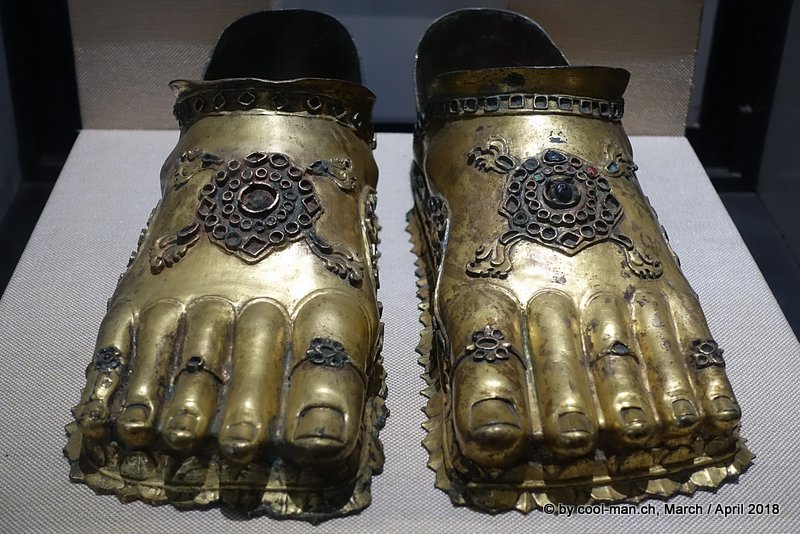
View of Colombo’s harbor from the bar of the aging Grand Oriental Hotel. On the balcony of the bar I met two US Dollar – Rupee traders of the nearby Standard Chartered Bank, who enjoyed their after-work beer here.

Of course, the culinary aspects were not neglected either. Here I meet a national dish, the hopper. It is a kind of pancake made of fermented rice flour and coconut milk, crispy at the ends and soft at the bottom. Hoppers are covered with various foods such as coconut, sugar, egg or vegetables.
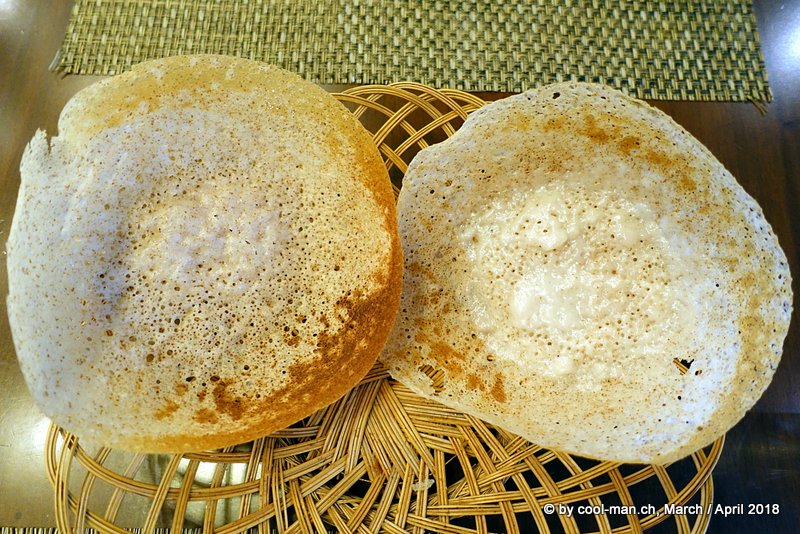
There was a restaurant in a colonial house near my hotel. Especially in the evening I liked the atmosphere in the subdued light of the inner courtyard. They even served tamarin drink, one of my favorite drinks.
Since this was my first trip to Sri Lanka, I followed the standard route suggested by the Lonely Planet travel guide.
Bentota
With an almost historic train I traveled along the coast to the south to Bentota, a beach destination. I deliberately write beach instead of bathing destination, because the waves here were so high that only surfers had a good time.
The architect Geoffrey Bawa owned a weekend house with a big garden near Bentota, which is now open to the public. It gives a good insight into the life of this man famous in Sri Lanka.
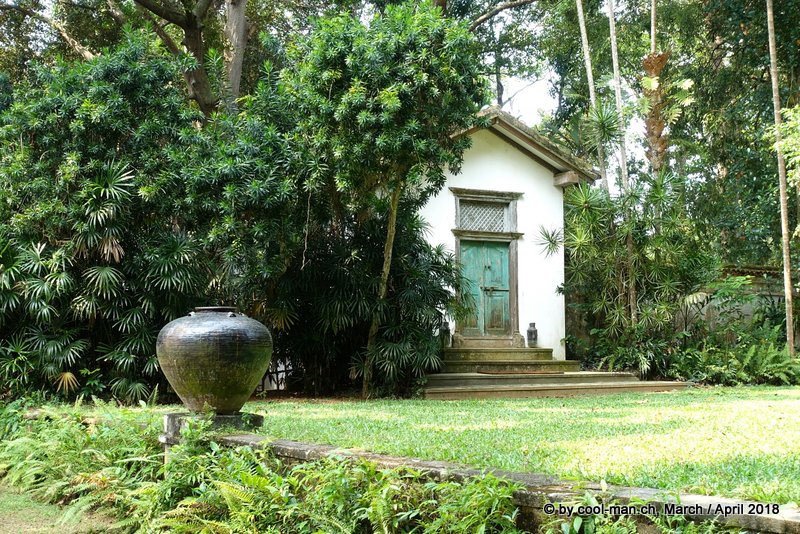
Nearby is the smaller Brief Garden of his brother Bevis Bawa, who was known as a landscape architect.
Hikkaduwa
By train I traveled along the coast to the next beach town, Hikkaduwa. This place is much more touristy than Bentota, with many hotels and inns that stretch for miles between the beach and the main road. I often went to a cool bar that offered stylish drinks and creative fresh dishes in a relaxed atmosphere.
Galle
By train I traveled further south to Galle. This city has been an important port for several thousand years, from where ivory, peacocks and cinnamon have been exported. Trade partners were Arabs, Persians, Romans, Malayans, Indians and Chinese. In 1502 the Portuguese occupied the city, which in 1640 was again occupied by the Dutch United East Indian Company. The Dutch built a huge fortress covering the entire historic city of Galle. Today it is a world heritage site. It is the largest preserved fortress in Asia, built by European occupiers. Meanwhile, tourism plays an important role. Some palaces have been converted into boutique hotels. There are good, trendy restaurants and whole streets consist almost exclusively of souvenir shops. Nevertheless, Galle still has its own atmosphere, which is reinforced by the walkable wall surrounding the city.
Ella
At half past five in the morning I took the only direct bus to the mountain village of Ella, 200 km away. The place is popular with tourists. For this reason, several new hotels have been built, which offer a good price/performance ratio thanks to the strong competition. Unfortunately, traffic in the village causes a lot of noise and exhaust fumes. Fortunately, there are a few hikes on the surrounding hills, so that you can leave the village behind you. The hikes often lead through tea fields, which will accompany me again and again during my Sri Lanka trip. The mountainous interior is ideal for tea production. Sri Lanka is therefore the second largest tea exporter in the world.
A tea field
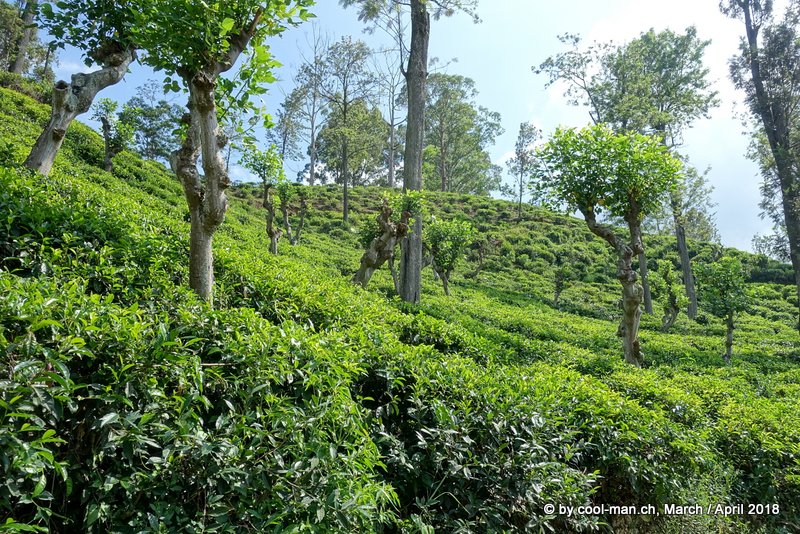
The British built train lines also in the hilly interior of the country to transport the cultivated agricultural products cost-efficiently to the export ports. Nowadays these trains are a tourist attraction. However, they are also widely used by the local population.
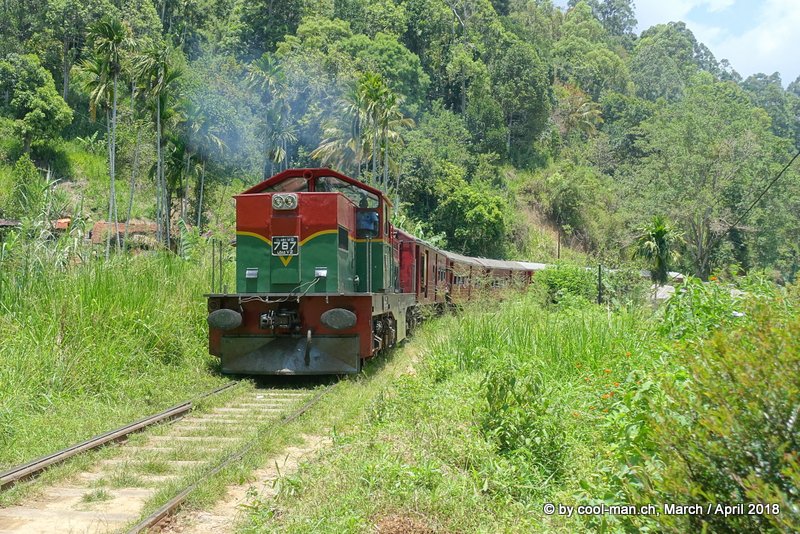
Along the route you can often see large taps that were used for the steam locomotives.
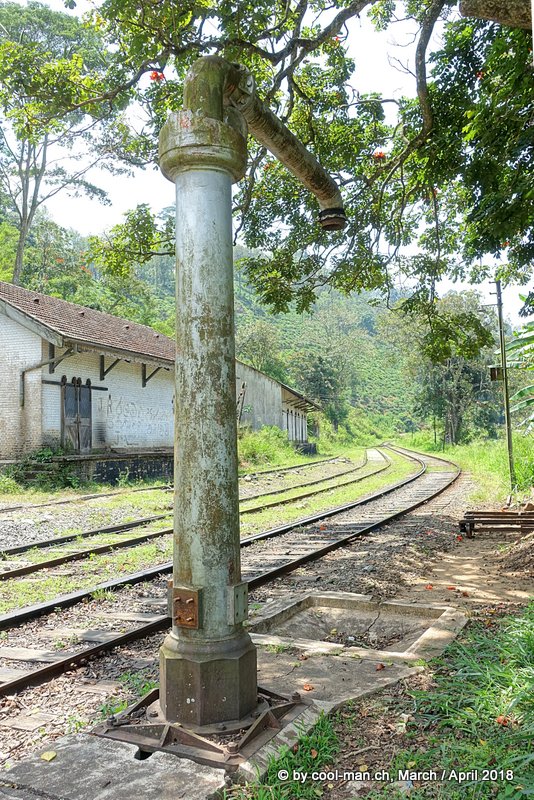
The signals are controlled via wire cables.
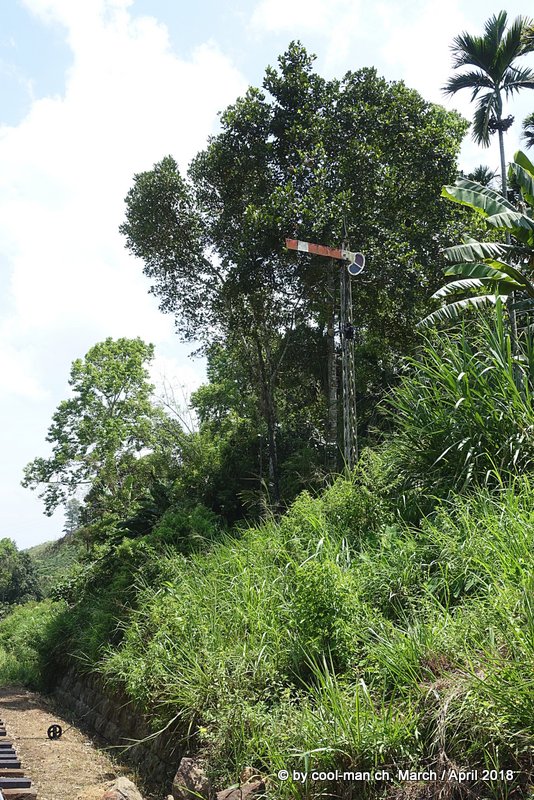
Nine-Arch Bridge
A train over the Nine-Arch bridge near Ella

98 Acre-Resort
Like all other travelers I climbed the two hills Ella Rock and Little Adam’s Peak. The views from these two hills were nothing special to me. On a hike I passed by the 98 Acre Resort, whose cuisine was a positive surprise.
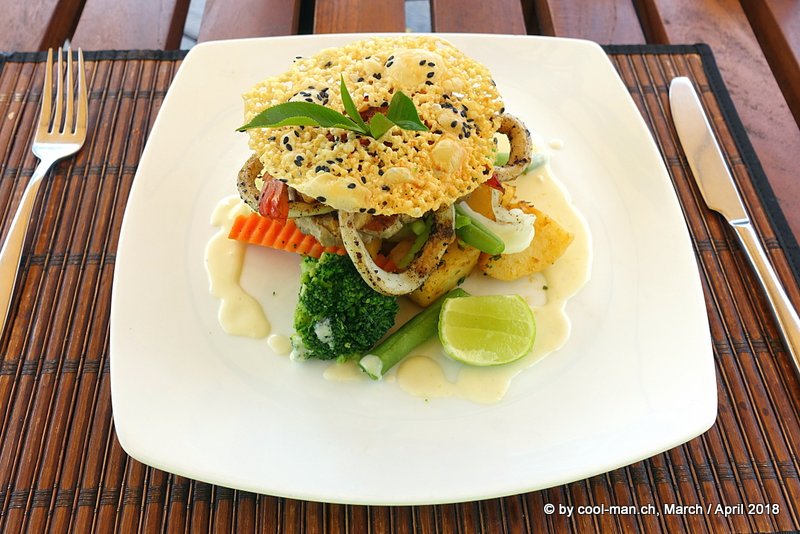
Nuwara Eliya
By train I took the most scenic route from Ella to Nuwara Eliya, the tea center of Sri Lanka. A visit to Sri Lanka is incomplete without a visit to a tea factory. I therefore visited the Bluefields tea factory, where visitors were introduced to the different steps of tea production and could marvel at the partly historical machines.
In the next two days I walked to the Ramboda Waterfall and visited the beautiful Hakgala Botanical Garden and the Hindu temple Aadishakti Seeta Amman.
In Nuwara Eliya I was served this typical Sri Lankan curry
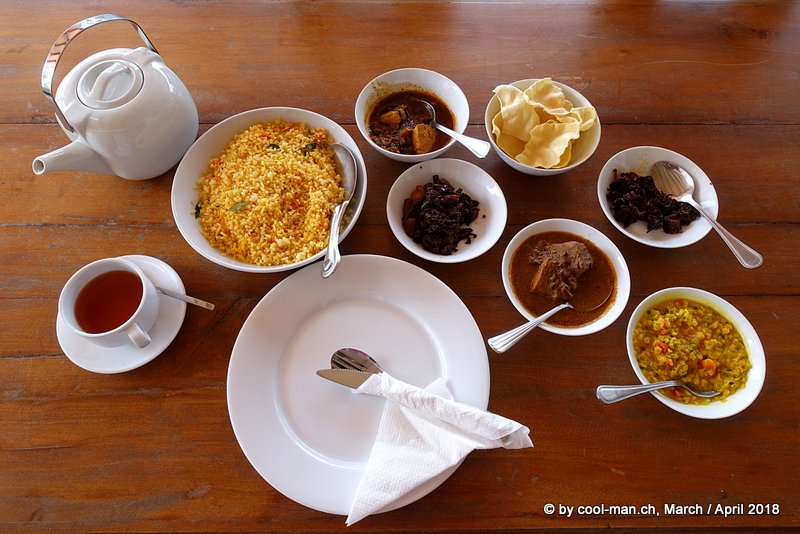
Adam’s Peak
Before arriving in Sri Lanka I received travel tips from other people. One tip was always included: The ascent of the 2’243 meter high Adam’s Peak. This mountain has a religious meaning for Buddhists, Hindus, Muslims and Christians. For Buddhists it is an important pilgrim destination, as Buddha himself is said to have visited the mountain. A rock formation is interpreted as a footprint of Buddha.
The mountain is climbed in the middle of the night. The summit is reached in time for sunrise. I was assured that there is a bus at 1:30 in the morning from Nuwara Eliya station to Dalhousie, from where the ascent starts. The bus driver and the station manager also confirmed the departure time.
At 1:15 I was at the departure point and the bus was there. But the engine was switched off, the lights were off and the driver was not at the bus. This was a bad sign, as the driver usually starts the bus engine at least a quarter of an hour before departure.
I found out that the bus is waiting for a train that was late. So I waited with the other travelers. It turned out that I was the only one waiting for the bus. Everyone else wanted to ride the late train. I couldn’t wait too long because I wanted to be on the mountain before sunrise and I was told that the ascent takes 2.5-3 hours and the ride to the starting point of the ascent takes almost an hour. At 2 o’clock I had to find an alternative means of transport so that I could reach the summit before sunrise. Luckily I found a tuk-tuk driver who took me to Dalhousie in an hour. It was already after three o’clock when I started the ascent. I thought I was too late and quickly walked up the wide path with thousands of steps without a break. Again and again I overtook people who were not used to mountaineering. I was surprised when after only 1.5 hours I had already overcome the almost 1’000 meters in altitude and reached the temple on the summit too early.
During the ascent you will come across various pilgrimage stations
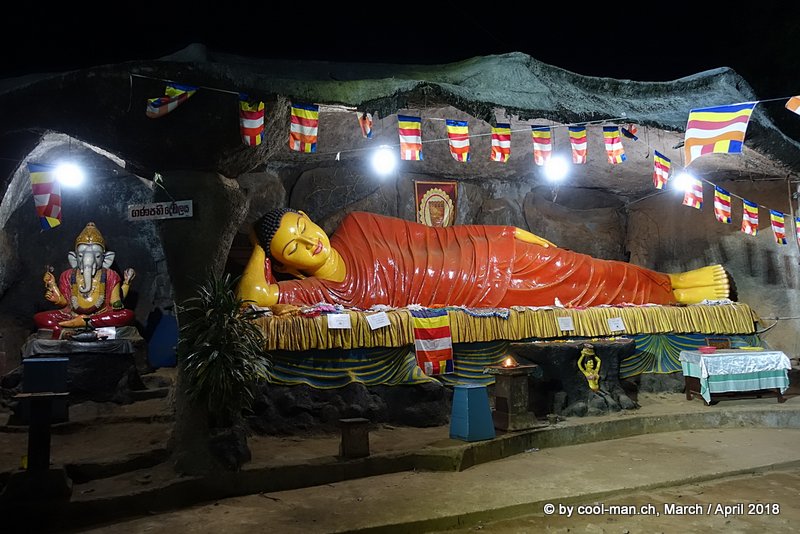
The sunrise from Adam’s Peak was an experience. But even more special was to see the cone-shaped shadow of the mountain over the landscape as the sun rose.
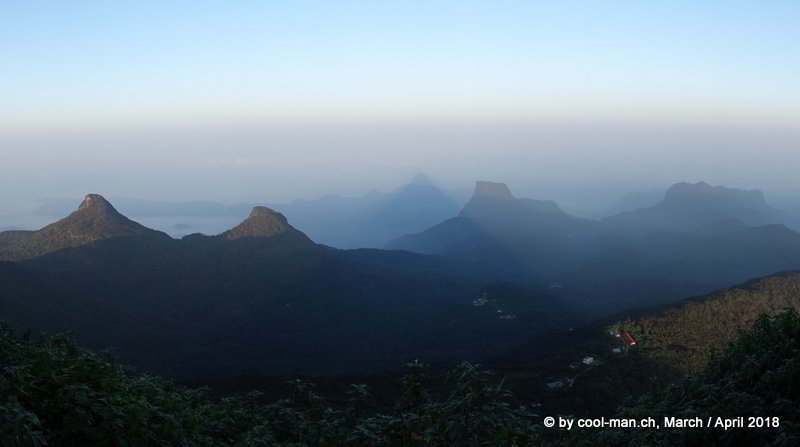
The entrance gate of the pilgrim path

The Adam’s Peak after the descent in daylight. Luckily I didn’t see the mountain before the ascent. The ascent seems more difficult than it actually was.
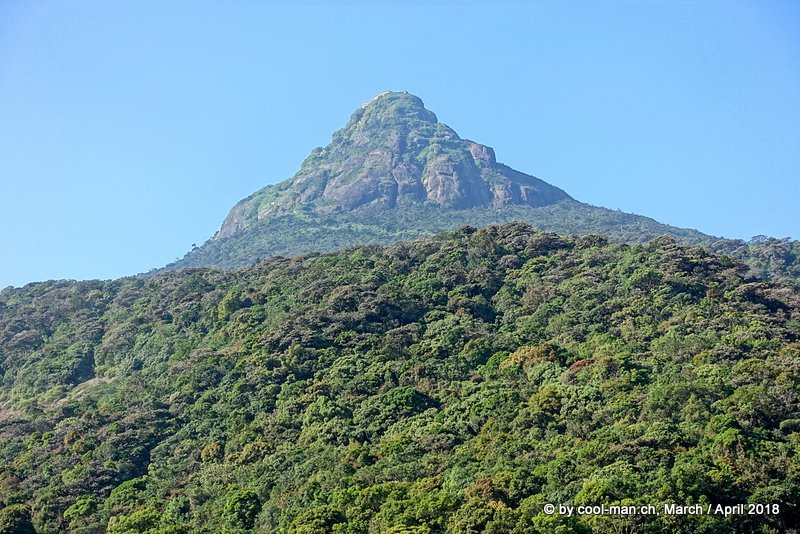
Kandy
I continued my journey to Kandy, the spiritual center of Sri Lanka.
Lake Kandy, 630 metres long, was built in 1807 by King Sri Wickrama Rajasinghe next to the Temple of the Holy Tooth Relic.
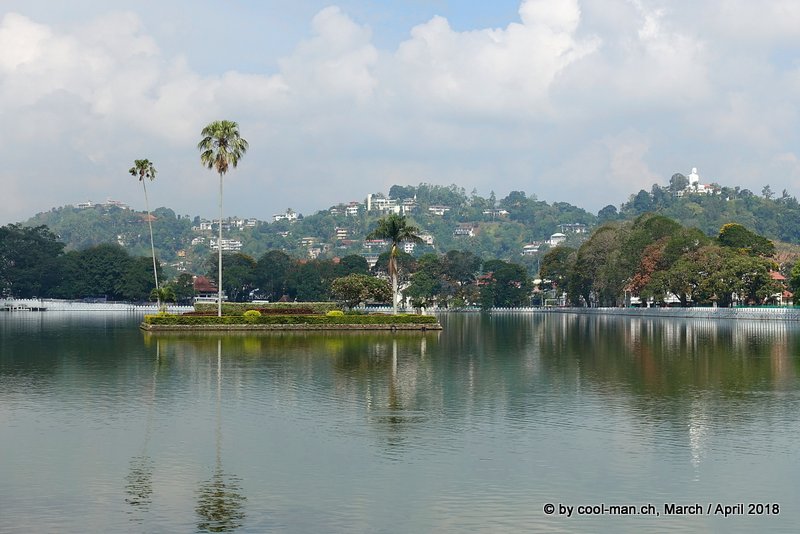
Temple of the Sacred Tooth Relic
The Temple of the Sacred Tooth Relic preserves a tooth of Buddha, making it one of the holiest places in the Buddhist world. Visitors can take a brief look at the golden storage container. No photography was allowed.
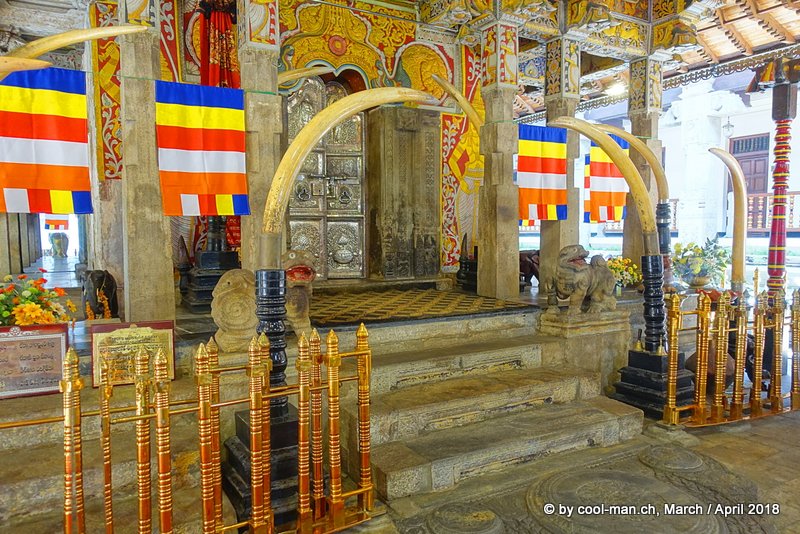
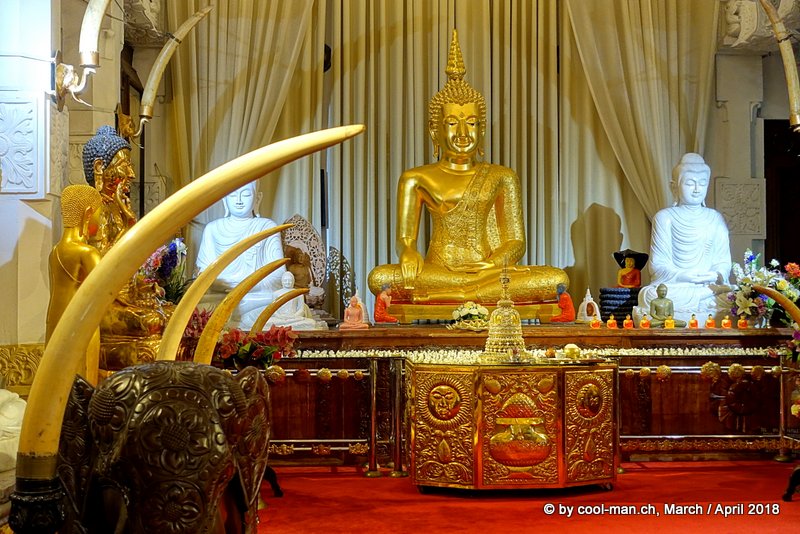
Ceylon Tea Museum
The Ceylon Tea Museum is located in the former Hanthana Tea Factory. Among others, it introduces the two most important tea pioneers, the two Scotsmen James Taylor and the more famous Thomas Lipton. Although tea is ubiquitous in Sri Lanka today, tea was not native to Sri Lanka. James Taylor brought tea from India to Sri Lanka in 1867. He worked tirelessly and experimented with different varieties. He also manufactured the first machines for processing the tea leaves himself. Thomas Lipton had already built up a grocery chain throughout Britain and was a rich man. In 1890 he traveled to Sri Lanka and met James Taylor there. He bought the tea directly in Sri Lanka, shipped it and sold it without intermediaries in his shops. So he could offer the tea much cheaper. He also sold the tea in small portions. So far tea has been sold open. His tea brand Lipton was a complete success and soon he also supplied his tea to other food shops. The Lipton brand is still famous today. It now belongs to the Unilever Group.
The museum has an impressive collection of old tea processing machines such as dryers, fermentation tables and sorting machines. The peculiarities of the different tea areas in Sri Lanka are explained one floor higher. I particularly liked the tea tasting, which made it possible to compare teas of different qualities and origins. As with every tasting, the spittoon was not missing (on the picture on the left).

From the tea museum I walked seven kilometres with the navigation app to the Royal Botanical Garden. The navigation led me along small paths that have never seen a tourist. I was received like a VIP in a small house and was immediately offered tea. The older man of the house was very enthusiastic and insisted that I photograph him with his wife.

Unfortunately, it rained heavily during my visit to the Royal Botanical Garden, so I do not show any photos of the garden here. In the garden you can see countless small and large plants that are attractively presented.
The Asgiri Maha Viharaya Buddhist Monastery

Ranawana Purana Rajamaha Viharaya Temple
At 80 feet, the Buddha in Ranawana Purana Rajamaha Viharaya Temple is the world’s largest in a walking pose.

Heeressagala Ancient Temple
From the temple of the imposing Buddha I walked to the temple Gadaladeniya Vihara. I met these young monks at the Heeressagala Ancient Temple, which is not mentioned in any travel book. These encounters are more authentic and as worthwhile as a visit to a temple mentioned in the guide book. I made the experience that you can walk anywhere in Sri Lanka and always experience interesting things.

Gadaladeniya Vihara Temple
The Buddha in the Gadaladeniya Vihara Temple
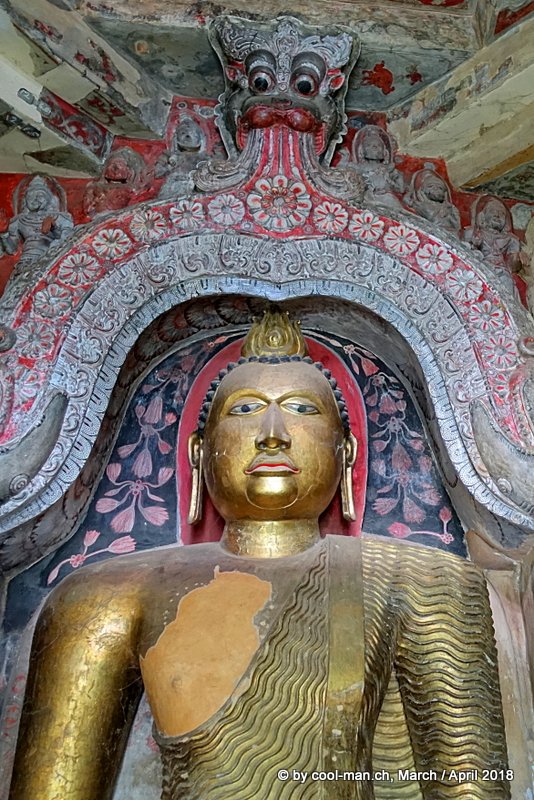
The next day I took a bus to the coast to Negombo, a beach town near the airport. That night a tuk-tuk took me to the airport from where I flew to Dubai (Link to the Dubai travel report).
In four weeks I saw a small part of Sri Lanka, mostly in the south. Apart from the poor air quality in the towns and villages, I liked it very much. The people are nice and the country is diverse. I will return and then concentrate on the center of the island and the north.
This text is an automatic English translation from the German original by deepl.com